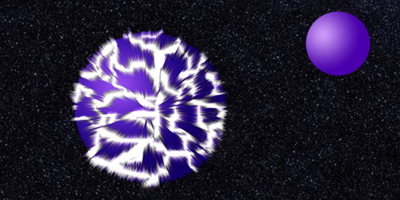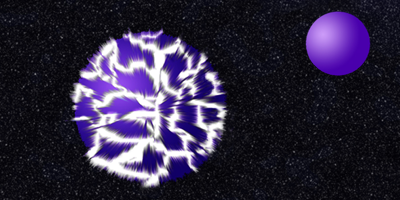Neutron Stars Shattered by Perfect Pitch
Short-lived gamma-ray bursts are thought to originate from a neutron star merging with another neutron star or with a black hole. Immense tidal forces will be produced during this merger, and—according to a new model proposed in Physical Review Letters—these forces may excite a resonant vibration in one of the neutron stars, causing its crust to shatter. The authors show that this sudden shattering could explain some pre-burst flares that have recently been observed.
Gamma-ray bursts (GRBs) come in two varieties: long and short. The long ones have been connected to certain supernovae, while the short ones appear to arise from binary mergers. While it’s been known for decades that some long GRBs are preceded by weaker gamma-ray flashes, it was only last year that astronomers detected a similar “precursor” emission arriving a few seconds before three short GRBs.
For short GRBs, one possible cause of these pre-burst flares is that the crust of one neutron star cracks open, releasing tremendous energy. Previous models considered tidal distortions, but this warping takes too long to form cracks, according to David Tsang of the California Institute of Technology, Pasadena, and his colleagues. They looked instead at vibrations that these tidal forces should stimulate as the merging heavyweights spiral in toward each other. Their calculations showed that the resonant excitation of a particular crust-core vibration could generate cracks capable of shattering the crust in a way consistent with the timing and energy release in the precursor data. They suggest that further observations could begin to probe the conditions inside of neutron stars. – Michael Schirber





